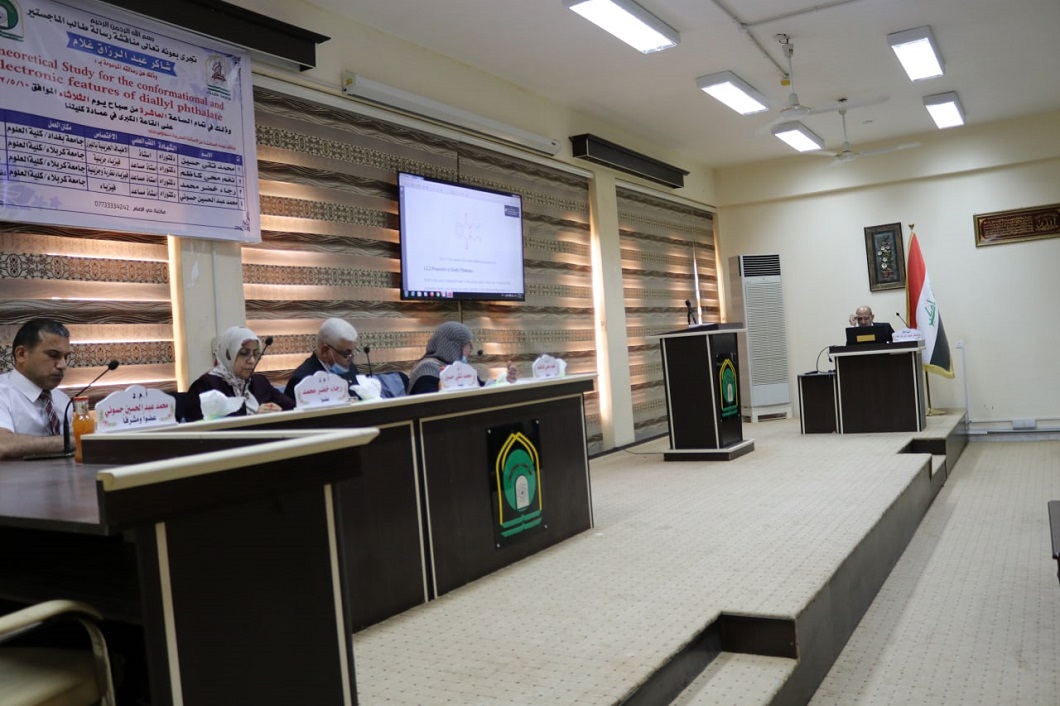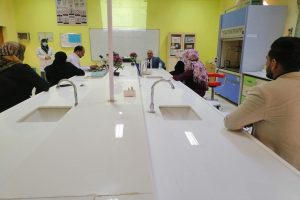A master’s thesis at the College of Science at the University of Kerbala has investigated a theoretical study of the structural and electronic properties of Diallyl Phthalate by student Shaker Abdul Razzaq Ghulam.
The study aims to identify the structural properties of Diallyl Phthalate such as bond length, bond angle and dihedral angle. As well as, electronic properties were discussed such as the distribution of natural atomic charge, dipole moment..etc. B3LYP, and the studied properties extend to the energy gap and vibration properties, including infrared spectroscopy and Raman spectroscopy.
The study concluded that the surface potential energy scanning technique is a powerful and necessary tool for preparing the geometry of the molecule before subjecting it to full optimization. In addition, the CAM B3LYP as a baises set is conjugated to a converging molecule with the lowest energy and the bond lengths calculated using DFT-CAM B3LYP are better than those found using the HF method. And the lone pairs and double bonds of the oxygen atoms O3 and O4 are responsible for the short bond angles, they lead to higher electron density, solid repulsion force and then distorted angles and equatoriality of the benzene ring make all diagonal angles close to zero and because of the electronegativity of oxygen, all oxygen atoms have negative values And similar as well as noting that all hydrogen atoms in the molecule are positive with similar values, which comes from hydrogen’s ability to give its own electron and the detection of the energy gap value using DFT that the molecule has higher chemical stability. The results of IR and Raman techniques showed a good agreement between Calculated results using DFT and practical results.
The study recommended studying the adhesive properties of DAP resins to metal after mixing them with epoxy resins.
As well as studying the optical and electronic properties of polybutylene terephthalate using the DFT method with Quantum espresso or MOPAC program and verifying the adhesion of polyamides to some metals such as aluminum.






























































